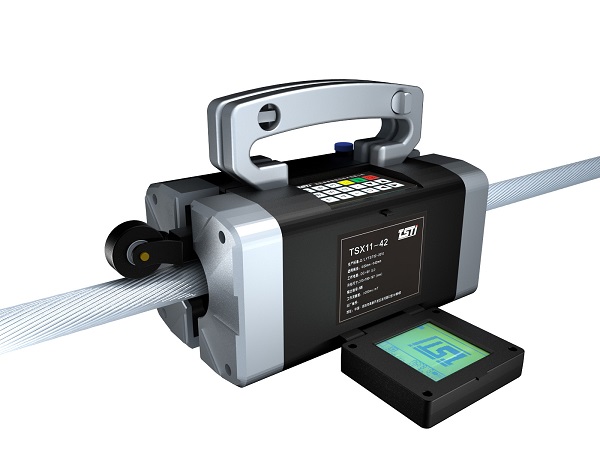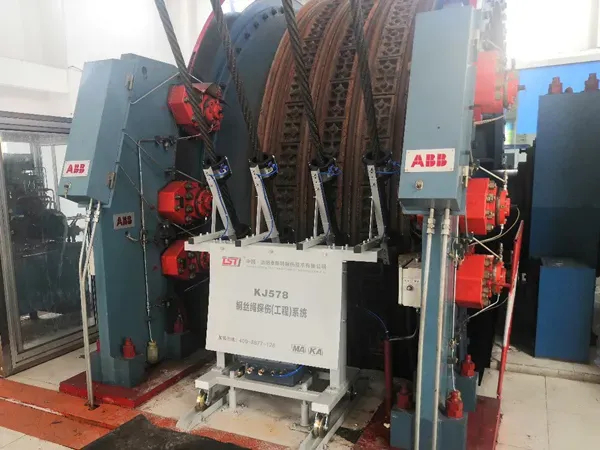In many industrial fields, wire ropes serve as crucial load-bearing devices, and their safety is directly linked to equipment operation and the safety of personnel and property. Wire rope flaw detection equipment, as a key tool for detecting internal defects in wire ropes, demands critical accuracy. So, does wire rope flaw detection equipment require regular calibration? The answer is yes. Regular calibration plays an irreplaceable role in ensuring equipment reliability, accuracy, and safety.
I. The Importance of Regular Calibration of Wire Rope Flaw Detection Equipment
(1) Ensuring Detection Accuracy: The core function of wire rope flaw detection equipment is to detect internal defects in wire ropes, such as broken wires, wear, and corrosion. These defects may be subtle, yet they are critical factors affecting wire rope safety. If flaw detection equipment is not regularly calibrated, its detection accuracy may be affected by various factors, such as aging of internal components and environmental interference. Regular calibration ensures that the equipment's detection accuracy meets standard requirements, accurately identifying potential wire rope problems and preventing safety hazards caused by equipment errors.
(2) Extending Equipment Life: Inspection and maintenance during the calibration process can promptly identify wear and aging issues with equipment components and allow for repair or replacement. This effectively extends the equipment's lifespan, reduces the frequency of equipment failures, and lowers maintenance costs.
(3) Complying with Regulations and Standards: In many industrial sectors, wire rope safety testing is subject to strict regulations and standards. These regulations and standards require that wire rope flaw detection equipment be regularly calibrated to ensure the reliability and legality of its test results. Regular calibration not only meets regulatory and standard requirements but also provides companies with compliant testing records, avoiding legal risks associated with equipment calibration issues.
(4) Improving Work Efficiency: Wire rope flaw detection equipment that has been regularly calibrated can more accurately detect wire rope defects, reducing false positives and missed detections.
2. Calibration Implementation
(1) Selecting an Appropriate Calibration Agency: These agencies typically possess specialized equipment and experienced technicians capable of fully calibrating wire rope flaw detection equipment in accordance with standard requirements.
(2) Developing a Calibration Plan: Develop a reasonable calibration plan based on the frequency of use and environmental conditions of the wire rope flaw detection equipment. Generally speaking, the more frequently the equipment is used and the more severe the environmental conditions, the shorter the calibration cycle should be. The calibration plan should clearly specify the calibration time, content, and responsible individuals to ensure timely completion of calibration work.
(3) Post-Calibration Verification: After calibration, the equipment should be verified to ensure the accuracy and reliability of its test results. Verification can be accomplished by comparing the test results with standard samples or by comparing them with test results from other equipment.
In short, the wire rope flaw detection equipment indeed requires regular calibration. It not only ensures the accuracy of equipment testing and extends its service life, but also meets the requirements of laws and standards. Therefore, companies should attach great importance to the calibration of wire rope flaw detection equipment, formulate a reasonable calibration plan, select an appropriate calibration agency, and conduct strict verification of the calibrated equipment to ensure that the safety inspection of wire ropes can proceed smoothly, safeguarding the operation of equipment and the safety of personnel and property.
prev: Frequent Conveyor Belt Accidents- Analysis of Conveyor Belt Steel Cord Detection Technology
next: How Does TST's Non Destructive Testing Technology Save Ports Millions Of Dollars A Year?







